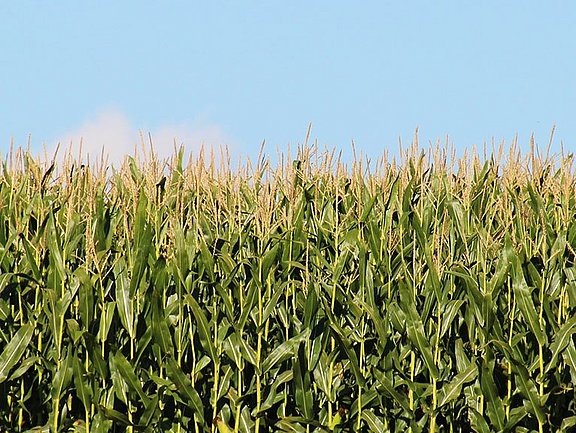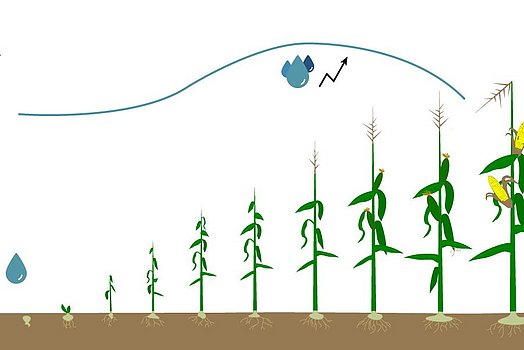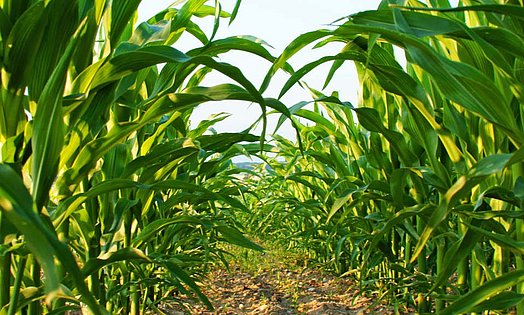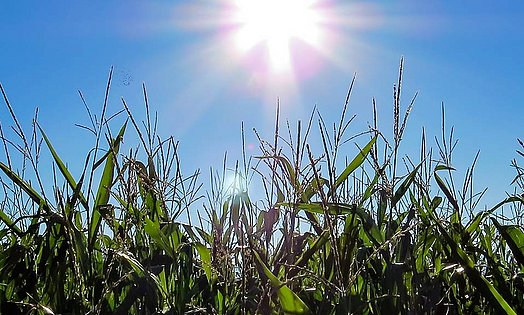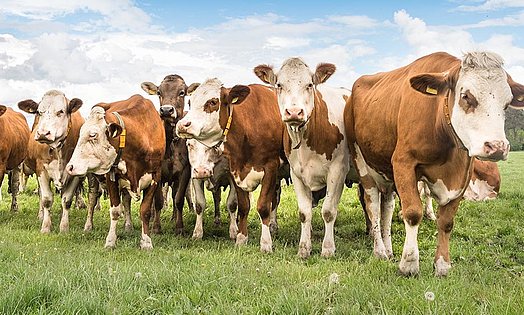First-rate maize silage despite increasing drought conditions
Does corn perform better in dry environments than other crops?
The two “drought years” of 2018 and 2019 were marked by exceedingly high temperatures, extended periods of drought and decreased precipitation in the winter.
Plant growing and base feed production need to adapt to these changing climatic conditions.
How do you produce high-quality and nutrient-rich maize silage, especially silage maize, as basic cattle feed in spite of this detrimental factor?
The explanations we have prepared below are supposed to provide useful information on water consumption, on possible adjustments in silage maize cultivation and on variety selection / variety breeding.
Paramount to high silage yields of excellent (feed) quality are the following factors:
Variety selection
Sowing time
Fertilization
Crop protection
Soil type
Soil cultivation
Root penetration
Sufficient precipitation during each of the vegetation periods of the crop plant
Most European countries have not seen any major changes in the average amount of precipitation per year. This fact might suggest that the water supply for the plants was adequate. However, another essential factor that is changing is the distribution of the precipitation throughout the year
When do corn plants need water?
The water quantity corn requires is dissimilar to other crops such as grain and rapeseed on account of its short growing season. The crops mentioned need most of their water during the spring for flowering and grain development. By contrast, corn requires only low amounts of water during young plant growth development. It is not until the main mass growth period in July and August, i.e. from the time the tip of the tassel becomes visible to the time of milk ripeness (BBCH 55-71), that the corn becomes sensitive to lacking precipitation.
Corn and water - a few peculiarities:
Corn ranks among the 2 – 3 % of C4 plants that are furnished with a unique enzyme system that lets them bind carbon dioxide (CO2) more effectively during the photosynthetic metabolism. The plants boast a higher water utilization efficiency than C3 plants such as wheat. Their greater CO2 attraction allows C4 plants to deliver a higher photosynthesis performance. They can draw on greater energy to produce solid growth even in poor conditions.
The efficient water utilization is also evident in the water consumption that is specific to the formation of dry matter, which is also referred to as the transpiration coefficient.
Corn requires approx. 170 – 300 liters of water over a growth period of roughly 140 days to produce one kilogram of dry matter. What, on the other hand, gobbles up 350 – 510 liters per kilogram of dry matter over a growth period that is nearly twice as long.
Tips on how to cultivate silage maize in increasingly dry conditions
Specified below is information on plant cultivation that includes tips on seed rate, fertilization and variety selection. The bulk of this information is based on cultivation trials undertaken by the NRW Chamber of Agriculture in Germany.
Fewer plants / m²
Reduced population density translates to less competition for nutrients, light and an increasingly diminished supply of water in the soil. Varying with the variety of the crop, the recommended number of plants / m² has been reduced to 6 – 9, allowing for enhanced cob and kernel development and higher concentrations of starch.
Elevating soil quality
To make the water stored in the ground available to the plants, the plants need to be given enough space to expand their roots. Adequate root penetration is hampered by soil compaction and waterlogging.
If the water consumption is not covered by appropriate precipitation during the vegetation period, the yield will hinge on the usable field capacity (nFK), i.e. the amount of water content held in the soil that is available to the plants. This usable field capacity is closely linked to the type of the soil. Enhancements to the soil structure or, first and foremost, topsoil buildup can boost nFK only to a limited extent.
Adapted fertilization
Water is essential to the mobilization and the transport of nutrients. Potassium, for instance, helps improve the availability of water. If stress brought on by drought has already occurred, an adequate supply of copper can have a positive effect on the utilization of nitrogen, phosphorus, and calcium. Overall, an adequately supplied plant needs less water for transporting the nourishing solution of nutrients. However, this advantage in water consumption is partially offset by the elevated mass growth brought on by an ample supply with nutrients.
Risk spread by selecting the right variety
If suitably supplied with water, the corn can grow a cob that accounts for up to half of the dry matter yield and later deliver a high base feed quantity after being processed into maize silage.
Conversely, if water is lacking for adequate flowering, the female flower of the corn plant will be delayed. In extreme cases, the tassel may then already shed the (male) pollen before the corresponding (female) silks even emerge. The result would be corn plants that fail to develop cobs due to missing pollination.
The following is therefore recommended:
Avoid the risk of stress induced by extreme drought: Select varieties with different ripening classes and alternating blooming periods.
Provide for good pollination even in adverse conditions: Choose varieties that show only minor differences between the female and the male flower.
Non-pollinated (female) silks form gateways for smut spores. Drought-induced stress can cause a corn smut infestation and degenerate feed quality dramatically.
If deprived of water during the further course of their development, the plants will only form short or not fully filled cobs. By contrast, a late-onset drought in the middle/at the end of July will lead to a deteriorated starch concentration in the cob.
For forage maize we recommend that you pick compact, pure-breeding varieties as they still allow for high levels of quality, albeit at a lower yield. Varieties that grow large in mass are primarily processed into silage used in biogas generation.
Silage additive
When dealing with high dry matter contents, you should use a silage additive to stabilize the ensiling process. A dosing unit for such additives is available for the baler models G-1 F125 and LT-Master.
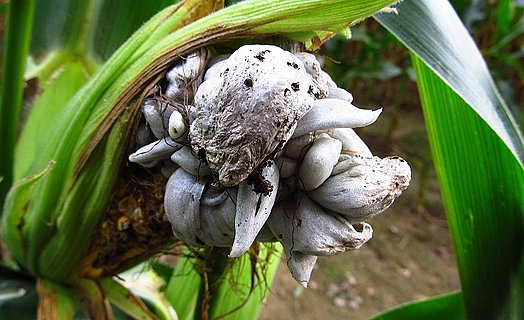
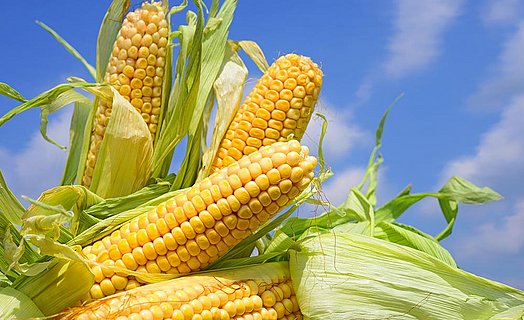
Cultivation objective: Drought-resistant corn
A key future challenge for the farming businesses of the world will be the efficient handling of water. This is why a variety of initiatives have already started inquiring into the breeding of particularly water-efficient varieties of corn. Some have already produced promising results - especially in Africa.
Aside from such conventional methods as selection or smart breeding, these initiatives also apply genetic engineering. The goal is to ingrain in the corn plants the properties of bacteria that preserve important cell functions under extreme conditions. The varieties conceived in this way have been provided license-free to small farmers since 2015, especially to farms south of the Sahara desert.
Even though we cannot assist you in the cultivation itself, we will be happy to render our support in the preservation of premium-quality maize silage: Click here for the product overview of our round balers, baler-wrapper combinations, wrappers, and bale transport equipment.
